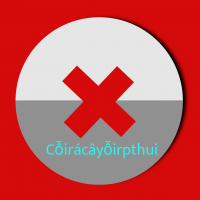Loopy Pro: Create music, your way.
What is Loopy Pro? — Loopy Pro is a powerful, flexible, and intuitive live looper, sampler, clip launcher and DAW for iPhone and iPad. At its core, it allows you to record and layer sounds in real-time to create complex musical arrangements. But it doesn’t stop there—Loopy Pro offers advanced tools to customize your workflow, build dynamic performance setups, and create a seamless connection between instruments, effects, and external gear.
Use it for live looping, sequencing, arranging, mixing, and much more. Whether you're a live performer, a producer, or just experimenting with sound, Loopy Pro helps you take control of your creative process.
Download on the App StoreLoopy Pro is your all-in-one musical toolkit. Try it for free today.
How to use midi file in a DAW?
I know you can export midi from Lumbeats apps, but what player or app do you use in AUM, ApeMatrix, Sand etc for the files?
Do some DAWs import and handle them natively? Or can they be loaded in MELA directly, or am I going to need a separate player to use with any of the above?



Comments
Midi Tape Recorder is one option. For AUM, ApeMatrix, etc. It has no editing though. Atom 2 and LK are a couple of apps that do offer import and editing.
Most full DAWs such as Cubasis and NanoStudio 2 can import midi files right to their timeline, but you always need to send the midi to a plugin of some sort.
Which then brings the challenge of mapping. Almost every app has differences in which notes play which sounds. You can't often just export what the Lumbeats apps put out and have it play back like you'd like in other apps. Some don't have as many pads, many are flexible which sounds play on which pads, and most have varying schemes for which notes play which pads.
The Lumbeats apps let you customize which notes output for which sounds. So, one way to go is to customize the output notes to the app you want to use. Another is to send the output through something like mfxConvert to change the incoming notes to the notes you need outbound. Or, you can move the imported notes around where you need them to be in the app you use to play back the midi if it has an editor. Some apps let you customize the notes that they use to play back. One Shot is an example of such an app.
Sorry, but there is no simple answer for what you would like to do. 😐
As luck would have it, I seem to have found a very simple answer -- at least for my needs.
SAND! I already owned it, and it has a piano roll, and you can import midi files into it. And it works like a charm -- at least so far
I exported .mids from drum computer and future drummer, and they worked out of the gate, driving OneShot in Sand.
I didn't even really have to use my jailhouse fake mapping trick, inserting Rosetta Scaler or a mela module in between the sequencer and the drum kit. Instant "good enuf for now" results and ham-headed modulation opportunities arise therefrom.